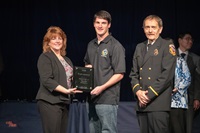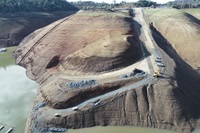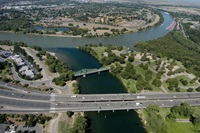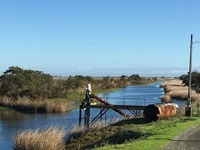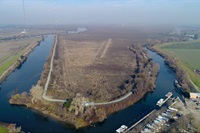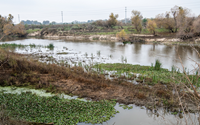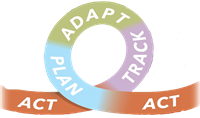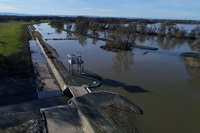
The Sacramento River moves water from Mt. Shasta to the Sacramento-San Joaquin Delta, gathering runoff from the Coastal Range and Sierra Nevada before turning toward Sacramento and joining with the American River. In wetter years, the Sacramento River swells to flood levels and releases water into the Yolo Bypass, a major flood control feature for ...

